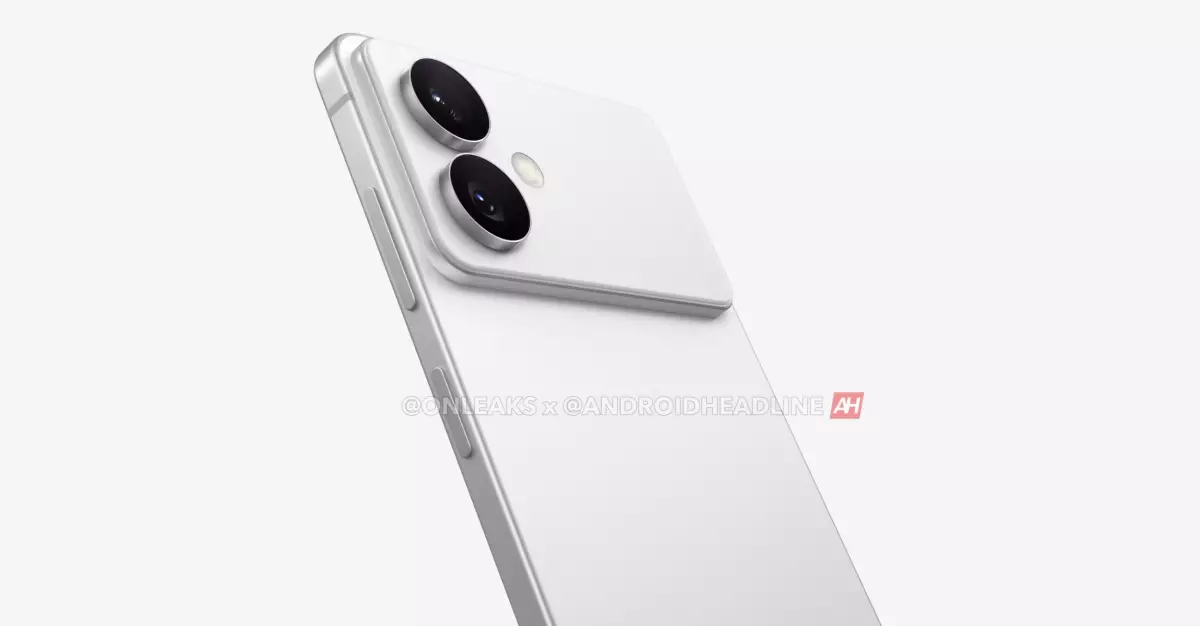The latest leaks about Samsung’s Galaxy S26 Edge suggest a significant departure from traditional design cues, embracing an ultra-sleek, minimalist aesthetic that echoes the trends set by Apple’s iPhone 17 Pro. While some may argue that the industry has become predictable, this shift indicates a conscious move toward sophisticated simplicity. Moving away from the familiar triple-camera arrays, Samsung appears to favor a more refined rear profile—featuring a dual-camera setup housed within a prominent yet unobtrusive bar. This design choice not only enhances visual appeal but also signifies a strategic effort to modernize smartphone silhouettes, catering to users who prioritize elegance as much as functionality.
Challenging the Status Quo of Camera Placement
Historically, Samsung’s flagships have distinguished themselves with distinctive camera arrangements—often vertically aligned or arranged in bold modules. The S26 Edge’s renderings point to an intentional reconsideration of this paradigm, opting instead for a horizontally aligned, less intrusive camera bar reminiscent of premium iPhones. This change suggests that manufacturer priorities are shifting from camera quantity to camera quality and integration aesthetics. It challenges the industry to think beyond megapixels and focus on how these components integrate harmoniously into the device’s overall form. With rumors indicating the inclusion of only two lenses, Samsung seems to be betting on smarter, more efficient photography rather than simply adding more lenses for show.
Innovating with Flexibility and Future-ready Features
Beyond design, the S26 Edge is poised to incorporate forward-looking features that will redefine user experiences. Speculators suggest the device may maintain a slim profile of 5.5mm, surpassing its predecessor’s thinness, highlighting a commitment to portability and comfort. Embedded magnets for Qi2 wireless charging signify a broader industry shift toward seamless power solutions, aligning with Apple’s recent models and Google’s Pixel 10. These enhancements will undeniably appeal to tech enthusiasts craving not just beauty but also practicality and ease of use. With a focus on slimmer profiles and innovative charging capabilities, Samsung is signaling a future where devices are dually elegant and effortless.
Is this a Sign of Industry Convergence?
The overlapping design nuances with Apple’s forthcoming iPhone 17 Pro suggest the industry might be entering a phase of convergence, where iconic styles become more unified across brands. While some might see this as a sign of creative stagnation, I interpret it as an evolution—an acknowledgment that there are certain aesthetics that resonate universally with consumers. The true test will be whether Samsung can infuse its signature innovation into these trends or merely emulate. The upcoming reveal, expected in January, will provide clarity. However, the persistent question remains: can Samsung sustain its innovation edge while adopting design elements that are becoming increasingly homogenized?
In the end, the upcoming Galaxy S26 Edge appears to be more than just a smartphone—it embodies a shift towards sleekness, efficiency, and understated elegance. Whether this is a fleeting trend or a lasting transformation will depend on execution. What seems clear is that the future of mobile design is leaning into clarity and refinement, challenging both manufacturers and consumers to embrace a new standard of sophistication.

